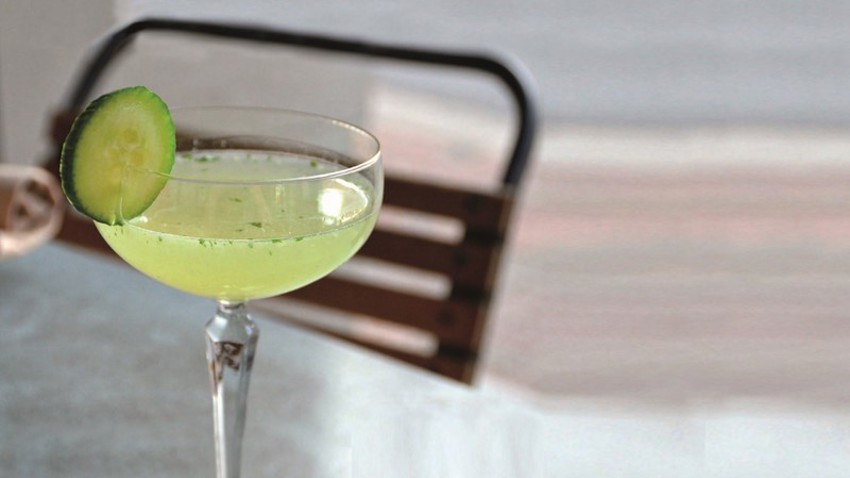
Gin has gone from unpopular and overshadowed by vodka to the most exciting and quickly moving of the spirits categories in a very short span of time. For a number of years small independent ‘craft’ spirits had been gaining in popularity in the States, but a couple of laws stood in the way of UK distillers.
Those laws have been relaxed and we've witnessed the floodgates opening with a whole host of new Gins to indulge in and experimental use of botanicals breathing a very fresh and modern air into a spirit category that had begun to feel a little dusty. With all this change it might be time for us to take a quick second and remind ourselves of how all these new products (more than 150 new Gin brands have emerged in the UK over the last two years) fit together.
Do you know your Genever from your New Western? Our quick guide below should help!
London Dry
Despite the name, London Dry Gin can be produced anywhere in the world. It is very dry, light-bodied and pungent and represents what most people think of when they think about Gin.
Perfect in
- G&T
- Aviation
- Dry Martini
New Western
An umbrella term for a new wave of gins which is alternatively called New American or International Style. Commonly, these Gins have low levels of juniper and a wider, more unusual range of botanicals; many are made by small distillers who each try to add their own unique stamp to the gin.
Perfect in
- A range of cocktails depending on flavour profile/ botanicals.

Old Tom
Old Tom now refers to a sweet style of gin, one that sits somewhere between a Genever and a London Dry Gin and there are many different theories about where the term Old Tom originates from.
One of the more engaging theories says that when the first Gin Acts drove the gin trade underground, the illegal sellers in private houses started to indicate their location using the sign of a tom cat. Money and gin were then exchanged through draws and pipes, meaning the identity of the seller was concealed in order to avoid any prosecution.
This was written about in the autobiographical “The Life and Uncommon Adventures of Captain Dudley Bradstreet”; despite writing about a cat sign to signify illegal Gin sale, there isn’t actually any mention of the term Old Tom.
One more fanciable version relates to a batch of gin that had a certain distinct flavour after a cat, unfortunately, fell into an open vat. Others say it refers to a batch of gin made by an old distiller named Tom - this may refer to Thomas Chamberlain who was an old distiller at Hodges distillery. Whatever the origins of the name ‘Old Tom’, it is a style of gin that is seeing a resurgence.
Perfect in:
- Tom Collins
- Martinez
- Ramos Gin Fizz
Plymouth
Slightly less dry than a London Dry Gin and more earthy in flavour, Plymouth Gin can only be produced in Plymouth using the water from the springs found in Dartmoor.
Perfect in:
- Dry Martini

Genever
Traditional of the Netherlands; Genever, or Holland gin, is the original juniper spirit and forerunner of today’s gin. Made from a malt grain base resulting in some whisky characteristics. Available in two styles “jonge” [young] and “oude” [old] which relates to the production method as opposed to the age. Jonge Genever has much in common with a London Dry Gin, though often sweeter it can be used in the same way. Oude Genever is closest to the Genevers consumed in the Low Countries and Britain before the invention of the continuous still. It is a darker colour, with complex layers of flavour. Using malted barley and often cask aged, it is more similar to a whisky with the juniper notes harder to pick out.
Perfect in:
- Jonge Gin Fix
- Oude Neat
- Oude Old Fashioned
Aged
The idea of resting gin in barrels is not new and dates back to the 18th century when they were used to ship and store gin. Today, barrel-aged gin is not about necessity and practicality but about discovery and the use of different casks to add a new dimension to Gin, taking it more into the realms of a sipping spirit.
Perfect in:
- Negroni
- Old Fashioned
- Neat

Flavoured
Arguably, by their very nature and use of botanicals, all gins are flavoured; however, the Gins we have classified as flavoured have a single dominant flavour other than juniper and are of normal Gin strength.
Perfect in
- PG&T with garnish to complement flavour
- A range of cocktails depending on flavour
Liqueurs
Classified as fruit liqueurs with a 25- 30% ABV, these are made by adding fresh fruit, most commonly berries (sloes/damson/ mulberries) or fruit essence. Increasingly made commercially, there is, however, a great British tradition of domestic production using foraged fruits.
Perfect in
- Bitter Lemon
- Sloe Gin Fizz
- Negroni
Eager to find out more about the dark history of gin and it's bright future? A great place to start is our Gin brochure. Or browse our Gin range.
To learn more about Gin, read our latest articles, here: What is Gin?

